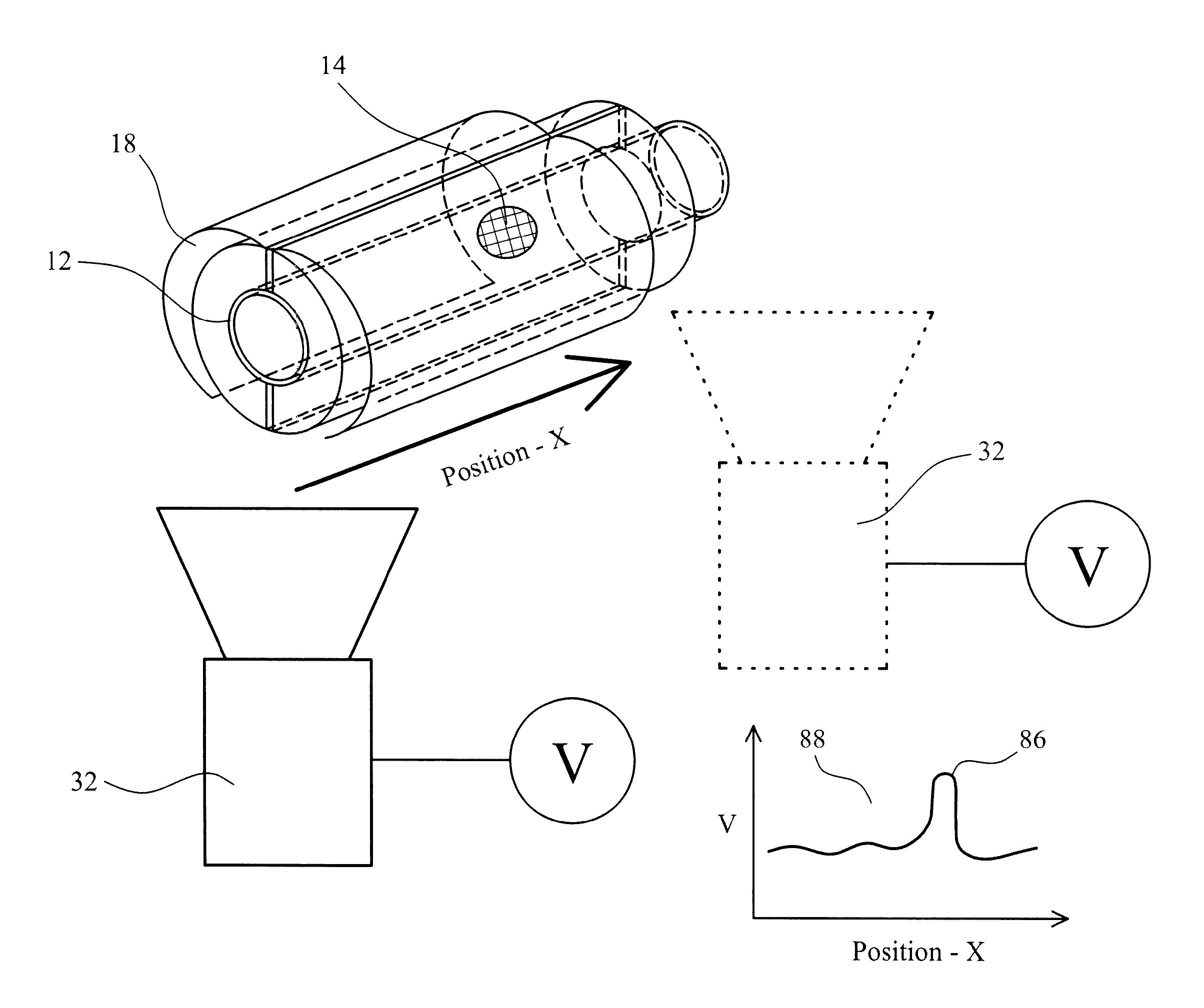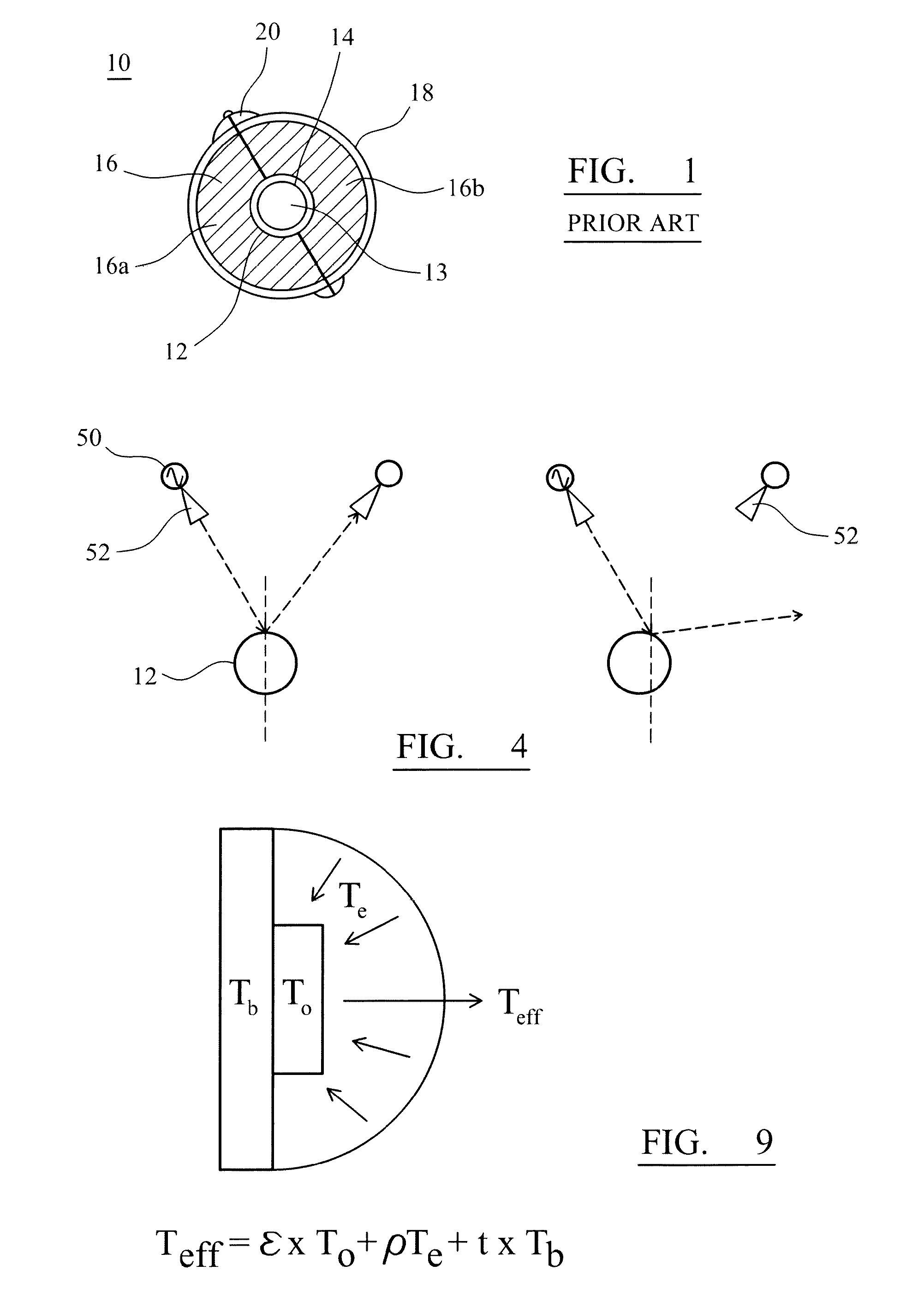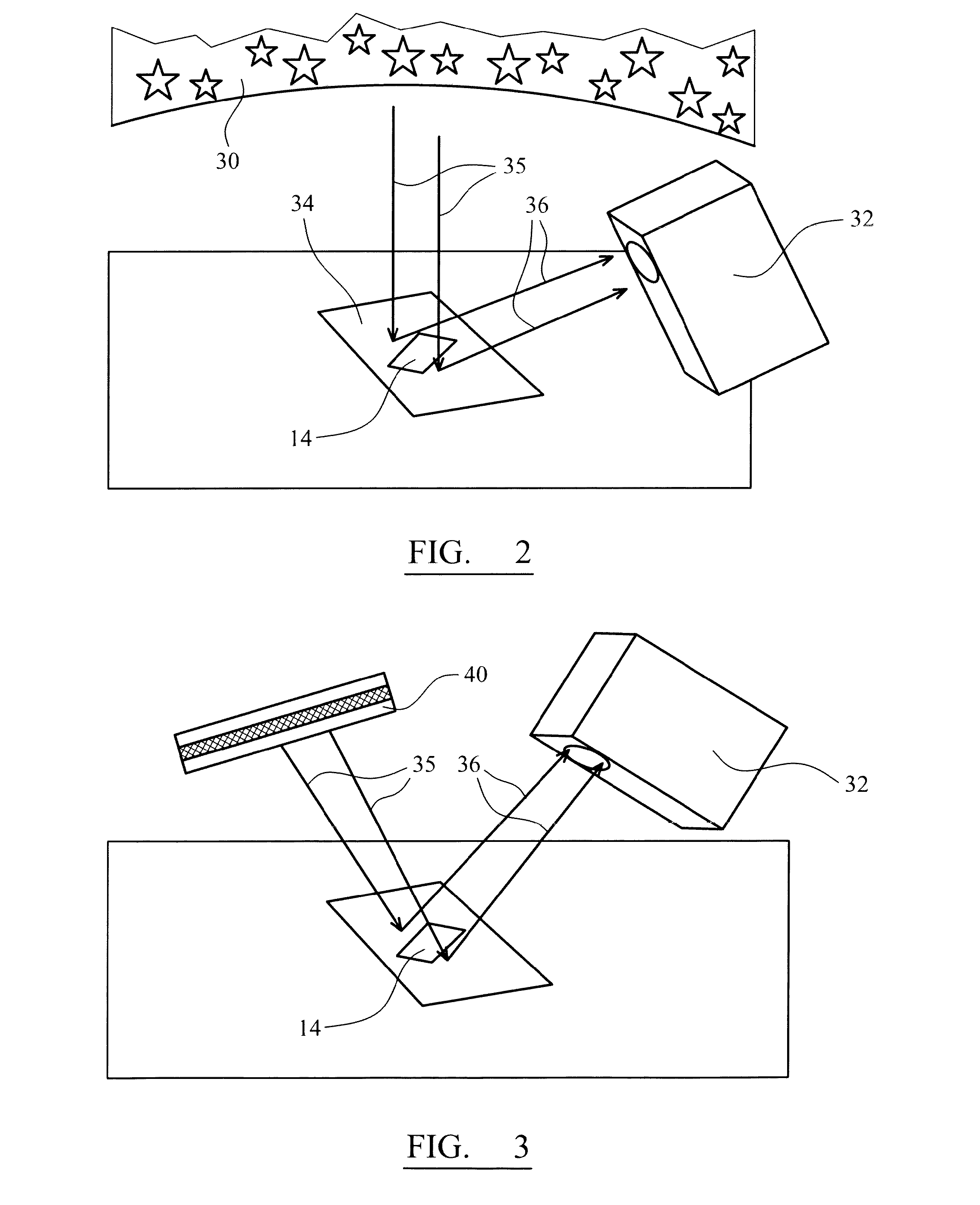Detection system and method of detecting corrosion under an outer protective layer
a detection system and protective layer technology, applied in the field of detection systems, can solve the problems of affecting the environmental, shutting down the entire system, affecting the environmental and safety, and affecting the safety of the environment,
- Summary
- Abstract
- Description
- Claims
- Application Information
AI Technical Summary
Benefits of technology
Problems solved by technology
Method used
Image
Examples
Embodiment Construction
[0038]FIG. 1 shows a typical pipework system 10. A pipe 12 is made of a substrate that is subject to some form of corrosion 14, such as rusting in the case of an iron-based pipe. The pipe 12 may carry, within its interior 13, any number of materials (including oil or other chemicals) and may be internally lined or its substrate externally coated with a protective coating, such as a paint, or otherwise protected by an external insulating layer 16. In the latter respect, the layer 16 may be a thermal lagging which is secured in placed around the pipe of an external jacket 18. The insulating layer 16 may, in fact, be realised by two hemispheres (16a, 16b) which are clamped together by the external jacket 18 in combination with some form of locking mechanism 20 that acts through the external jacket 18. The skilled artisan will understood the arrangement of the pipework system 10 and how the insulating layer 16 is held in place about or otherwise applied (in the sense of being adhered to...
PUM
| Property | Measurement | Unit |
|---|---|---|
| temperature | aaaaa | aaaaa |
| electromagnetic frequencies | aaaaa | aaaaa |
| wavelengths | aaaaa | aaaaa |
Abstract
Description
Claims
Application Information
 Login to View More
Login to View More - R&D
- Intellectual Property
- Life Sciences
- Materials
- Tech Scout
- Unparalleled Data Quality
- Higher Quality Content
- 60% Fewer Hallucinations
Browse by: Latest US Patents, China's latest patents, Technical Efficacy Thesaurus, Application Domain, Technology Topic, Popular Technical Reports.
© 2025 PatSnap. All rights reserved.Legal|Privacy policy|Modern Slavery Act Transparency Statement|Sitemap|About US| Contact US: help@patsnap.com



